Basalt
Type of resources
Topics
Keywords
Contact for the resource
Provided by
Years
Formats
Representation types
Update frequencies
-

Analyses of volcanic glasses from a range of oceanic islands (Samoa, Cook-Australs, Iceland) and mid-ocean ridges (Reykjanes Ridge). Each glass sample was analysed for the concentrations of >60 elements, using a combination of electron probe microanalysis (EPMA), laser ablation inductively coupled plasma mass spectrometry (LA-ICP-MS) and secondary ion microprobe (SIMS) analysis. Detailed analytical techniques that were used to produce the data are presented in Wieser et al. (2020) and Reekie et al. (2019).
-

Backscattered electron image (BSE) images of ocean island basalt samples from four volcanic systems in Iceland (Holuhraun, Skuggafjoll, Laki and Eyjafjallajokull) and two eruption sites on Pico Island in the Azores (samples PI-011 and PI-041). These samples are described in the following manuscript: Neave, David A., Alexander G. Stewart, Margaret E. Hartley, and Olivier Namur. ‘Iron Valence Systematics in Clinopyroxene Crystals from Ocean Island Basalts’. Contributions to Mineralogy and Petrology 179 (2024): 67. https://doi.org/10.1007/s00410-024-02144-x.
-

Major and trace element data for olivine- and plagioclase-hosted silicate melt inclusions, their host minerals, and associated matrix glasses, from Midfell, Snaefellsjokull and Oraefajokull, Iceland. Melt inclusion compositions are provided as measured, and corrected for post-entrapment crystallization. Reflected light images of the melt inclusions.
-
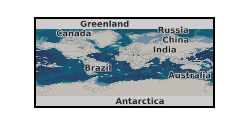
The data are magnesium (Mg) isotope composition, i.e. the relative difference of isotope ratios as defined in Coplen (2011, doi: 10.1002/rcm.5129). The reference was DSM-3 (see Galy et al., 2003, doi: 10.1039/b309273a) and data are given in per mil. Samples consisted of terrestrial peridotites and basalts as well as a suite of meteorites including chondrites, shergottites, diogenites and one angrite. A large portion of the data have been published in Hin et al. (2017, doi: 10.1038/nature23899).
-
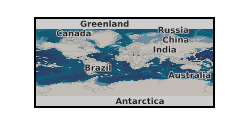
Vanadium and Zinc isotopic compositions of powdered basalt samples from the active volcanic zones of Iceland. These samples have been extensively characterised for other geochemical quantities in a series of papers (Marshall et al, 2022, Barry et al., 2014; Caracciolo, 2021; Caracciolo et al., 2020; Füri et al., 2010; Halldórsson et al., 2016a, 2016b; Macpherson et al., 2005; Rasmussen et al., 2020).
-
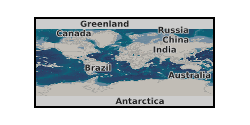
Neodymium (Nd) concentrations, Nd radiogenic isotopes (143Nd/144Nd) and Nd stable isotopes (d146/144Nd) for chondritic meteorites, terrestrial basalts and mantle rocks, and rock reference materials.
-
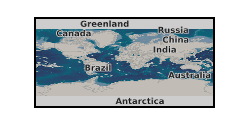
High precision electron-probe analysis of olivine compositions from a set of ocean island basalts. Accompanied by thin section scans and QEMSCAN (Quantitative Evaluation of Minerals by SCANning) compositional maps.
-

Major, trace element and Pb isotope data are reported here for basalts recovered by drilling at the flanks of the Reykjanes Ridge, south of Iceland, during IODP Expedition 395C (2020-2022). The drilling targeted V-shaped ridges and V-shaped troughs forming the flanks of the Reykjanes Ridge. There were 4 sites drilled and sampled, and these include holes: U1554 (4F) - located on V-shaped trough 2B, holes U1555 (5I + 5G) - located on V-shaped trough 1, U1562 (2B), located on V-shaped ridge 3, and U1563 (3B) - located on V-shaped ridge 2A. Samples are predominately volcanic glasses and were recovered from cores drilled from up to 150m below the sediment-basement interface where they penetrated a series of pillow and sheet flow lavas. The sample name corresponds to the site, hole, core section and depth interval (see IODP Exp 395 site reports for details). Fresh volcanic glass was separated, cleaned in deionised water, picked under a binocular microscope to remove and altered material, cleaned again and then dissolved in HF and HCl prior to analyses. Major and trace elements abundances were analysed on an ICP-MS with a selection of geological reference materials (GRMs) used as standards. Pb isotopes ratios (206/204, 207/204 and 208/204) were measured on a neptune multicollector ICP-MS following using a double spike technique applied to the sample solutions. Reported here are the measured values of the GRMs and their uncertainties. The aim of this study was to test the hypothesis that the V-shaped ridges are the result of temperature and compositional pulses in a mantle plume, that is postulated to rise beneath Iceland and spread outward where it intersects the mid-ocean ridge to the south, and the effects of those pulses on climate over the last ~20Ma.
-
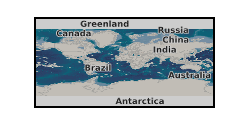
lectron probe analyses of the composition of plagioclase macocrysts from the 2021 eruption of the Fagradalsfjall eruption in Iceland. These were collected in profiles from rim-to-core and were designed for diffusion chronometry applications. This will be published in a article (in press in late 2022) in the journal Geology and with lead author Kahl. Analyses of a secondary standard across the many days of analytical sessions are also provided.
-
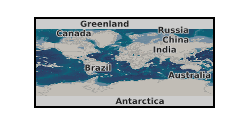
The data was generated from a range of laboratory experiments where a range of silicate rocks (granite, basalt, peridotite) were crushed in oxygen-free conditions, deoxygenated water added, and the generation of hydrogen gas and hydrogen peroxide followed over a week. Results were compared to rock-free controls. The data was collected to provide insight into the production of oxidants (such as hydrogen peroxide) along tectonically active regions of the subsurface, and how the oxidants might influence subsurface microbiology.
 NERC Data Catalogue Service
NERC Data Catalogue Service